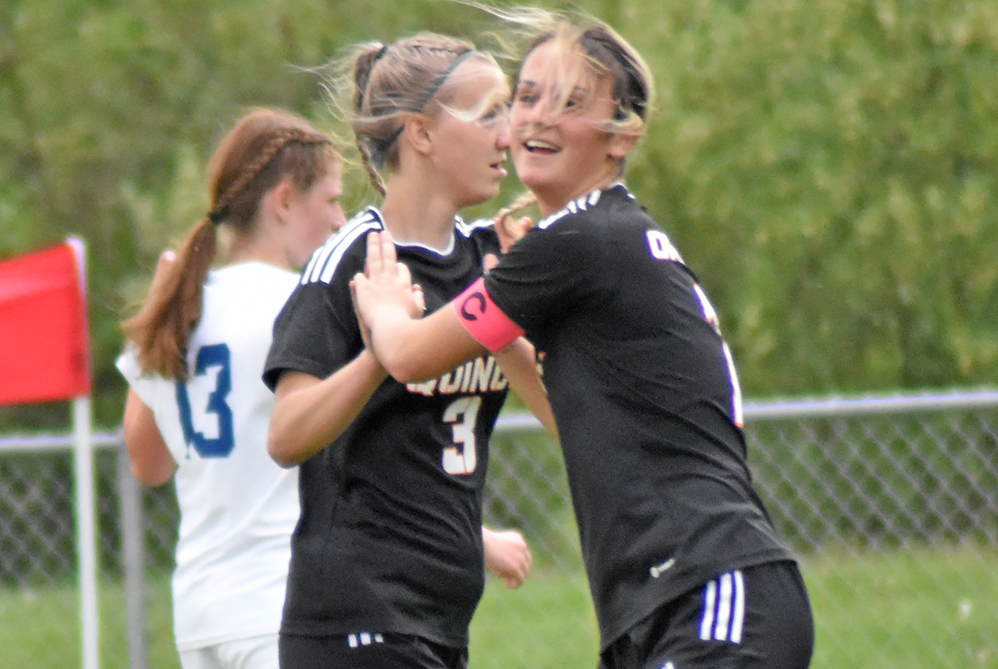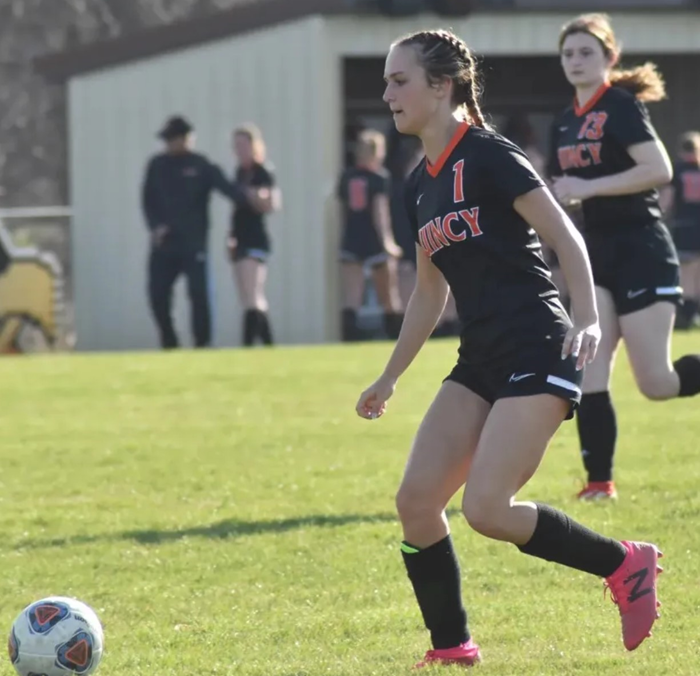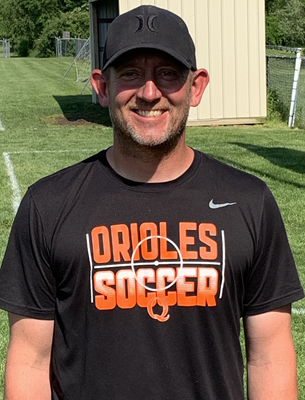
New Math: Division & Multiplication Problems
July 25, 2017
By Jack Roberts
MHSAA Executive Director
This is the second part in a series on MHSAA tournament classification, past and present, that will be published over the next two weeks. This series originally ran in this spring's edition of MHSAA benchmarks.
High school tournament classifications went viral before there was social media and most of us knew what “viral” meant.
Much as a virus infects computers today or has created epidemics of disease around the world for centuries, high school tournament classification – once introduced – tends to spread uncontrollably. Once started, it tends to keep expanding and rarely contracts.
While we are still some distance from providing every team a trophy as a result of expanding high school tournament classification across the country, there is criticism nevertheless that we are headed in that direction – a philosophy which is supposed to exist only in local youth sports for our youngest children.
Michigan could be blamed for all this. Michigan is generally accepted as the first state to provide different classifications for season-ending tournaments for different sized schools. It started a century ago. Today, every state has various classifications for its tournaments in most if not all sports. And it is a bit ironic that Michigan – creator of the classification chaos – more than most other states has kept the number of tournament classes or divisions under control.
Yes, there is evidence that tournament classifications have expanded over the years in Michigan, especially with the relatively recent introduction of tournaments in football and the late 1990s’ move from classes to divisions in most MHSAA tournaments. But the MHSAA Representative Council has held true to its word when it expanded the playoffs for football from four classes to eight divisions: this is needed because of unique factors of football, factors that exist in no other sport; and all other sports should be capped at a maximum of four classes or divisions.
Kentucky is the preeminent defender of single-class basketball. All of its 276 high schools compete for the single state championship for each gender. In Indiana, there are still open wounds from its move in 1998 from one to four classes for its 400 schools in basketball.
Multi-class tournaments have tended to increase the number of non-public school champions, which some states are trying to lower through enrollment “multipliers,” and also tend to increase the number of repeat champions, which some states are trying to affect with “success factors” which lift smaller schools into classifications for larger schools if they take home too many trophies.
While there is considerable evidence that state tournaments do as much bad as good for educational athletics, state associations persist in providing postseason tournaments because, on balance, the experiences are supposed to be good for student-athletes. And once we reach that conclusion it is just a small leap to believe that if the tournaments are good for a few, they must be better for more – which leads to creating more and more tournament classifications. One becomes two classes, then three, then four and so forth.
While the argument is that more classifications or divisions provides more students with opportunities to compete and win, it is undeniable that the experience changes as the number of tournament classifications expands. It is not possible for state associations to provide the same level of support when tournament classifications expand to multiple venues playing simultaneously. For example, there is less audio and video broadcast potential at each venue, and less media coverage to each venue. Focus is diluted and fans diminished at each championship.
No one can argue reasonably that today's two-day MHSAA Football Finals of eight championship games has the same pizazz as the one-day, four-games event conducted prior to 1990.
In some states the number of divisions has grown so much that it is difficult to see much difference between the many season-ending state championship games and a regular-season event in the same sport.
It is a balancing act. And Michigan has been studying that balance longer than any other state, and charting a steadier course than most.
Addition by Division
The shift to Divisions for MHSAA Tournament play in numerous sports has added up to a greater number of champions for teams and individuals across the state. Following are the sports currently employing a divisional format, and the procedures for determining enrollment and classification.
In 23 statewide or Lower Peninsula tournaments, schools which sponsor the sport are currently divided into nearly equal divisions. They are:
- Baseball - 4 Divisions
- Boys Bowling - 4 Divisions
- Girls Bowling - 4 Divisions
- Girls Competitive Cheer - 4 Divisions
- LP Boys Cross Country - 4 Divisions
- LP Girls Cross Country - 4 Divisions
- LP Boys Golf - 4 Divisions
- LP Girls Golf - 4 Divisions
- Ice Hockey - 3 Divisions
- Boys Lacrosse - 2 Divisions
- Girls Lacrosse - 2 Divisions
- Boys Skiing - 2 Divisions
- Girls Skiing - 2 Divisions
- LP Boys Soccer - 4 Divisions LP
- Girls Soccer - 4 Divisions
- Girls Softball - 4 Divisions
- LP Boys Swimming & Diving - 3 Divisions
- LP Girls Swimming & Diving - 3 Divisions
- LP Boys Tennis - 4 Divisions
- LP Girls Tennis - 4 Divisions
- LP Boys Track & Field - 4 Divisions
- LP Girls Track & Field - 4 Divisions
- Wrestling - 4 Divisions
Lists of schools for each division of these 23 tournaments are posted on MHSAA.com approximately April 1. Listings of schools in Upper Peninsula tournaments for their sports are also posted on MHSAA.com. The lists are based on school memberships and sports sponsorships in effect or anticipated for the following school year, as known to the MHSAA office as of a date in early March.
In football, the 256 schools which qualify for MHSAA 11-player playoffs are placed in eight equal divisions annually on Selection Sunday. Beginning in 2017, the 8-player divisions will be determined in a like manner on Selection Sunday as well, with 32 qualifying schools placed in two divisions.
Schools have the option to play in any higher division in one or more sports for a minimum of two years.
The deadlines for "opt-ups" are as follows:
- Applications for fall sports must be submitted by April 15
- Applications for winter sports must be submitted by Aug. 15
- Applications for spring sports must be submitted by Oct. 15
Subsequent to the date of these postings for these tournaments, no school will have its division raised or lowered by schools opening or closing, schools adding or dropping sports, schools exercising the option to play in a higher division, or approval or dissolution of cooperative programs.
When the same sport is conducted for boys and girls in the same season (e.g., track & field and cross country), the gender that has the most sponsoring schools controls the division breaks for both genders.

Hollenbaugh Surpasses Older Sister to Net Quincy's Goal-Scoring Record
By
Scott Hassinger
Special for MHSAA.com
May 28, 2024
QUINCY – Sami Hollenbaugh aspires to become a successful realtor one day, and has the next steps toward that goal mapped out.
 But she already has made a big impact in the world of high school girls soccer as Quincy's striker the last four years.
But she already has made a big impact in the world of high school girls soccer as Quincy's striker the last four years.
Entering last week's 8-0 Division 3 District Quarterfinal win over Springport, Hollenbaugh had scored a school-record 89 career goals. Sami's older sister Emily Hollenbaugh, a 2020 graduate, previously held the mark.
Hollenbaugh's exposure to soccer began as a 5-year-old in the local AYSO programs in Quincy and Coldwater. A year ago, Sami joined the Jackson Jaguars, a travel soccer team, to prepare for her senior year.
"My mom put all us kids into AYSO when I was younger. That's where it all started, and I was also playing softball back then. After a while, I decided just to play soccer, and I've stuck with it ever since,” Sami Hollenbaugh said. “I just like scoring goals,"
Another of her favorite aspects is getting her teammates involved.
"I enjoy other girls who don't have as many opportunities to get chances to shoot and score. I just always want to do what's best for my team," Hollenbaugh said.
Hollenbaugh's two biggest influences are her older sister and her mother Melanie Hollenbaugh.
 "In my freshman and sophomore years, I compared myself a lot to Emily, but then I realized I didn't have to do (that) and just went out to be as competitive as I could,” Sami Hollenbaugh said. “My mom also keeps our stat book, and she's real good about keeping me upbeat and not letting me get down on myself during a match.”
"In my freshman and sophomore years, I compared myself a lot to Emily, but then I realized I didn't have to do (that) and just went out to be as competitive as I could,” Sami Hollenbaugh said. “My mom also keeps our stat book, and she's real good about keeping me upbeat and not letting me get down on myself during a match.”
Quincy (14-4-1) won the Independent Soccer League and looks to capture a second-straight District championship later this week. The Orioles' 2023 season ended with a 7-0 loss to Williamston in the Regional Semifinals.
Hollenbaugh is one of four seniors on an 18-player roster dominated by underclassmen. Piper Eby, Grace Lindsley and Tessa Henry are the Orioles' other seniors.
"This year we have a lot of juniors, new girls and freshmen. It took us a little while to get where we are now, and we've improved a lot,” Hollenbaugh said. “Our midfield is very strong, and offensively we're getting more free balls. We spend an incredible amount of time working on shooting at the goal. I try to get as many reps at practice and at home as possible.”
After graduation, Hollenbaugh plans to study interior design at Michigan State University. Collegiate soccer is not on the radar, but she does plan on playing at the intramural level.
The real estate field has always interested her.
"I've just always enjoyed looking at homes. I go on the Zillow app a lot and have always pictured my family or myself living in a particular home," Hollenbaugh said.
Outside of soccer, Hollenbaugh is involved with National Honor Society, student council and is a member of Quincy's Varsity Club.
Olivet (14-3-3) squares off against Battle Creek Pennfield (13-5-1) in Thursday's other District Semifinal match. Winners will meet in Saturday's 10 a.m. title game with the champion advancing to the Williamston Regional.
"We had some early struggles while some of our younger players learned our system. If we can clean a few things up, I feel we have a good shot to keep advancing," said Quincy's eighth-year head coach Ivan Swift, who had been Hollenbaugh's only coach since she began playing the sport.
 "I started coaching AYSO soccer and have been Sami's coach through the various levels. About a year ago, I reached out and suggested to her that she should play travel soccer to get another coach's perspective. That experience has really helped her grow as a player. You can really see the improvement she's made this spring.”
"I started coaching AYSO soccer and have been Sami's coach through the various levels. About a year ago, I reached out and suggested to her that she should play travel soccer to get another coach's perspective. That experience has really helped her grow as a player. You can really see the improvement she's made this spring.”
Andy Hosmer, also head women's coach at Jackson Community College and Brooklyn Columbia Central, coached Hollenbaugh with the Jackson Jaguars.
"Sami is a very driven person. Records are meant to be broken, and I've tried to let her know all season just where she is at to accomplish those,” Swift said. “After she has graduated, I'll do the same for the other girls. Those kinds of situations help motivate your players to improve.”
Even a leg injury hasn't deterred Hollenbaugh from reaching her goals.
"Sami has battled a pulled right quad most of this season, but has only missed one match. It’s benefited her because now she's developed a good shot with her left leg when she needs to and continues to score. I think that just shows her level of determination," Swift said.
Freshman forward/midfield Laura Bostic is second in scoring for the Orioles with 22 goals, to go with 10 assists. "Laura will be a bright spot for years to come," Swift said.
Makenzie Maynard has 13 goals and four assists, Abby Hinds has nine goals and eight assists, and Sade Harges has scored six goals with three assists. Other Quincy standouts include Mackenzie Maynard, Ciaira Paul, Claire Robertson, Danica Swift, Adriana Welch and Ella Bartell.
"We call Abby 'Big Time' because she's got a real strong leg and distributes the ball very well. She takes most of our free and corner kicks and is kind've our point guard in the middle of the field," Ivan Swift said.
The Orioles are experienced on the defensive backline with three juniors playing key roles. Danica Swift, daughter of the head coach, is in her third varsity season as Quincy's starting goalkeeper.
Quincy's biggest wins this season came over Adrian Lenawee Christian 3-1 in conference play, along with a 4-1 victory over Brooklyn Columbia Central.
 Scott Hassinger is a contributing sportswriter for Leader Publications and previously served as the sports editor for the Three Rivers Commercial-News from 1994-2022. He can be reached at [email protected] with story ideas for Berrien, Cass, St. Joseph and Branch counties.
Scott Hassinger is a contributing sportswriter for Leader Publications and previously served as the sports editor for the Three Rivers Commercial-News from 1994-2022. He can be reached at [email protected] with story ideas for Berrien, Cass, St. Joseph and Branch counties.
PHOTOS (Top) Quincy senior striker Sami Hollenbaugh, far right, celebrates with a teammate after scoring this season. (Middle) Hollenbaugh (1) brings the ball upfield during a match. (Below) Eighth-year Quincy varsity girls soccer coach Ivan Swift has been Hollenbaugh's coach since she began playing soccer at age 5. (Action photos by Troy Tennyson/Coldwater Daily Reporter; Swift headshot by Scott Hassinger.)

